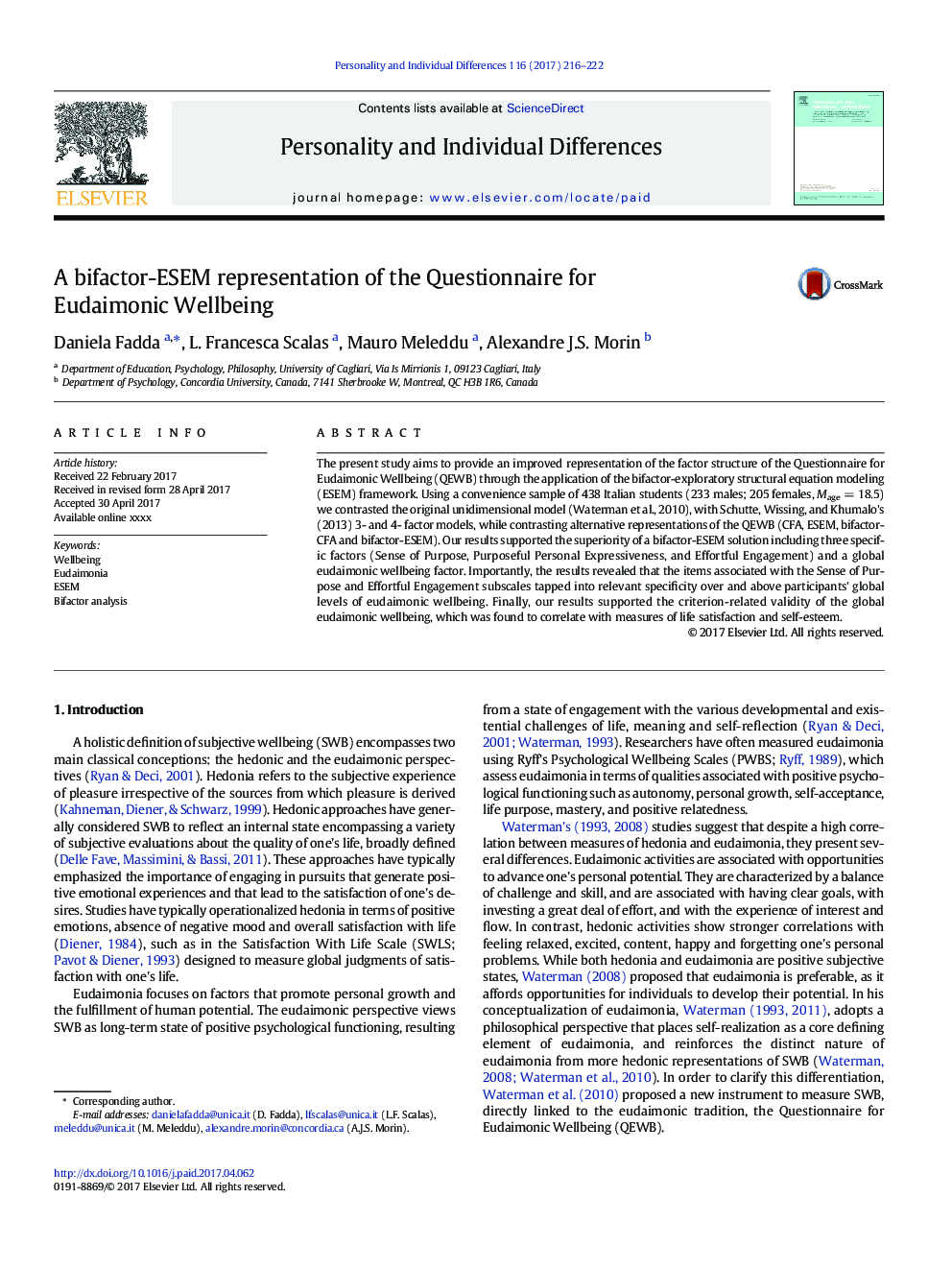| Article ID | Journal | Published Year | Pages | File Type |
|---|---|---|---|---|
| 5035606 | Personality and Individual Differences | 2017 | 7 Pages |
Abstract
The present study aims to provide an improved representation of the factor structure of the Questionnaire for Eudaimonic Wellbeing (QEWB) through the application of the bifactor-exploratory structural equation modeling (ESEM) framework. Using a convenience sample of 438 Italian students (233 males; 205 females, Mage = 18.5) we contrasted the original unidimensional model (Waterman et al., 2010), with Schutte, Wissing, and Khumalo's (2013) 3- and 4- factor models, while contrasting alternative representations of the QEWB (CFA, ESEM, bifactor-CFA and bifactor-ESEM). Our results supported the superiority of a bifactor-ESEM solution including three specific factors (Sense of Purpose, Purposeful Personal Expressiveness, and Effortful Engagement) and a global eudaimonic wellbeing factor. Importantly, the results revealed that the items associated with the Sense of Purpose and Effortful Engagement subscales tapped into relevant specificity over and above participants' global levels of eudaimonic wellbeing. Finally, our results supported the criterion-related validity of the global eudaimonic wellbeing, which was found to correlate with measures of life satisfaction and self-esteem.
Keywords
Related Topics
Life Sciences
Neuroscience
Behavioral Neuroscience
Authors
Daniela Fadda, L. Francesca Scalas, Mauro Meleddu, Alexandre J.S. Morin,
